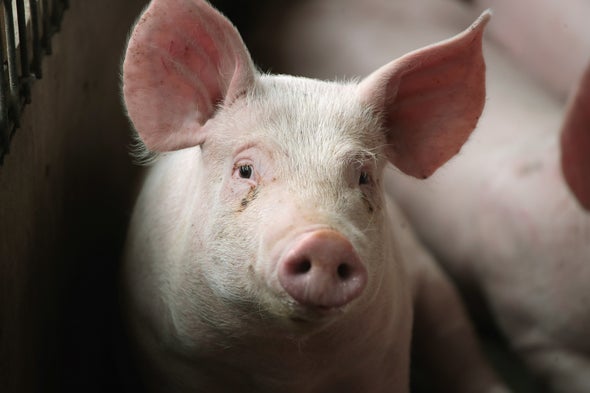Hog Waste to Biomethane

One thing’s sure: The removal of any portion of the 3.8 billion gallons of waste coming from 9.2 million hogs per year, notorious for its odor and release of airborne pathogens, will greatly improve the quality of life for those in the surrounding communities. The entire region heartily welcomes the proposed plant; you’re not going to see the NIMBY factor in play here.
In addition, there are other significant environmental benefits. In particular, in our civilization’s quest to reduce the environmental damage being created by the consumption of fossil fuels, the subject of biofuels is receiving a large and ever-growing amount of attention from both citizens and law-makers. A great deal of focus is being placed on biofuels, e.g., biomethane, which is chemically identical to the natural gas that is extracted from the Earth’s crust via fracking.
Unlike the process of burning fossil fuels, which releases previously sequestered CO2 into the atmosphere, biofuels are “carbon-neutral,” meaning that the creation of the feedstock removes the same carbon that is then released upon consumption.
In addition, scientists are becoming increasingly aware of and concerned about the environmental issues associated with fracking itself. Six countries (Canada, New Zealand, South Africa, Ukraine, and the U.K.), four states (Washington, New York, Maryland, and Michigan) as well as numerous cities and counties around the U.S. have already banned fracking, due to a host of different environmental issues. Yet the demand for energy-dense liquid fuels will only increase over the foreseeable future, and thus the quest for alternative sources is of ever-growing interest.
The removal of coal from the U.S. electricity grid-mix is happening at a rapid pace, by virtue of both its cost structure, which is no-longer competitive against renewables and natural gas, as well as its mix of greenhouse gases, combined with highly toxic heavy metals and radioactive isotopes. All this is further heightening the need for biomethane.
Biodiesel: It is believed that, in the coming 25 – 50 years, electric transportation will eliminate the demand for gasoline and diesel for most segments of the transportation sector. However, until that very slow transition is completed, the demand for renewable liquid fuels will remain very strong. Biodiesel is a replacement for diesel refined from crude, and biomethane is a replacement for the CNG/LNG that powers a great many fleets of trucks and buses.
Grant Proposal: In the grant proposal I recently completed for them I wrote: In short, there are virtually no conceivable events that will militate against growing demand for biofuels; such would require a complete abandonment of environmental responsibility from the entire ethos of the U.S. Rereading that just now, I see that this was an exaggeration. More accurately: I’m hoping that’s not a conceivable event; environmentalism in the U.S. hasn’t exactly been on a roll these last couple of years.

Craig,
Biofuels have been around a very long time. Some of the technologies date back before the turn of the 20th century.
The problems of Bio-fuels are logistics, poor quality (low calorific yield), low viscosity) and economics.
Collecting, processing and using the resultant product produced from pig waste is very time consuming, labour intensive and seldom economically viable.
Pig , like human manure is very raw and needs a lot of complex processing before becoming viable biofuel for use in transport engines or converting into electricity.
Although machinery can run on Biofuels, especially bio-fuel fossil fuels mixes, it’s not really not desirable without considerable modifications.
The idea of promoting bio-fuels as a viable alternative is at least 10 years too late! Despite billions of dollars wasted between 1974 and 2012, bio-fuels haven’t proved truly viable, except perhaps, when made from high grade surplus sugar cane.
I built and still operate (without a government grant) a small scale bio-mass plant. Although proud of my efforts, we generate enough power to satisfy the needs of our estate and our tenants in the nearby village, it hasn’t been a financially viable proposition.
Bio-fuels are more of an interesting hobby than a serious fuel source.
The environmentally disastrous consequences of of US corn based ethanol production should have dissuaded any sensible environmentalist to abandon bio-fuels.
Much better would be converting the pig manure into high grade fertilizer. Solving the problem of providing high grade fertilizer is a far more important and realistic target for the disposal of animal waste than beating the dead horse of bio-fuels.